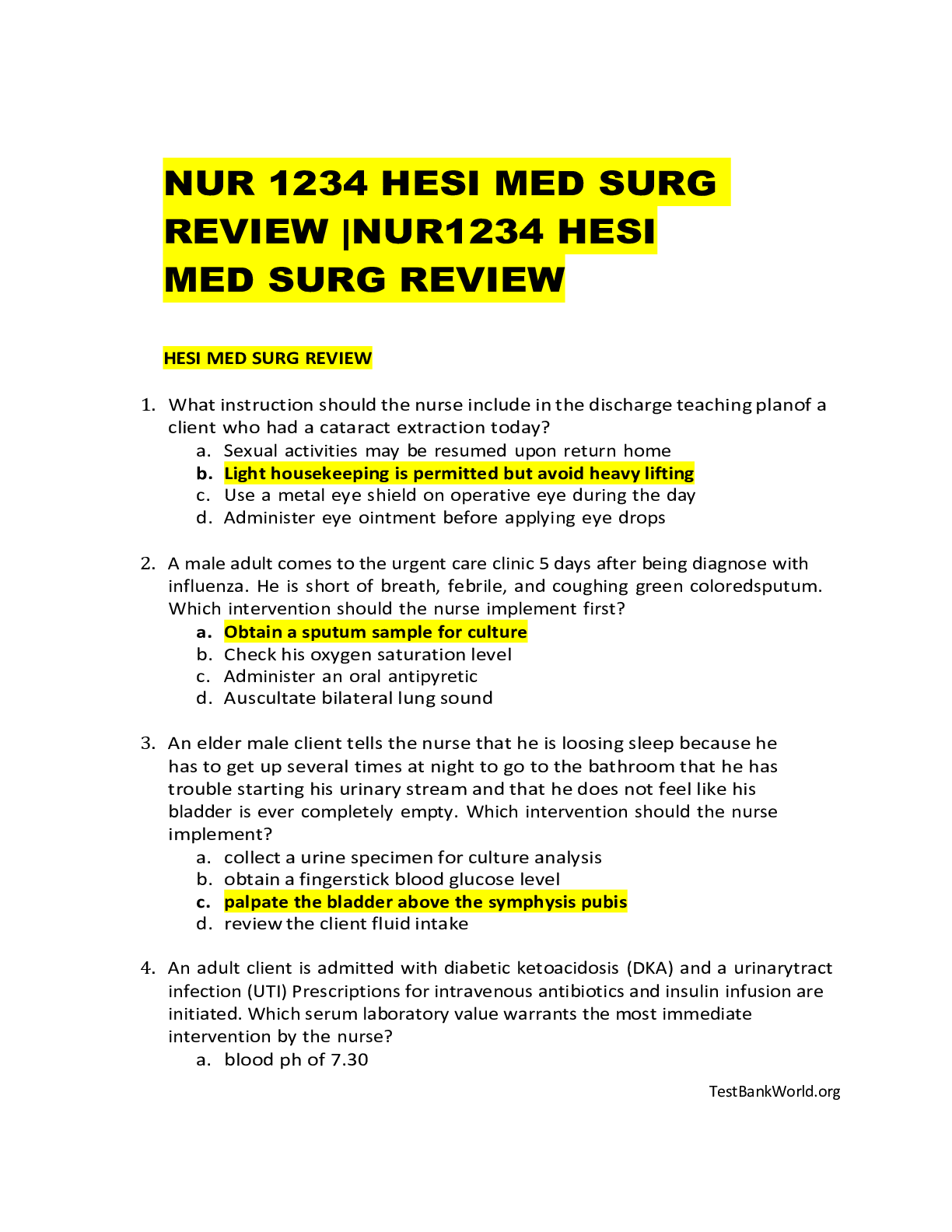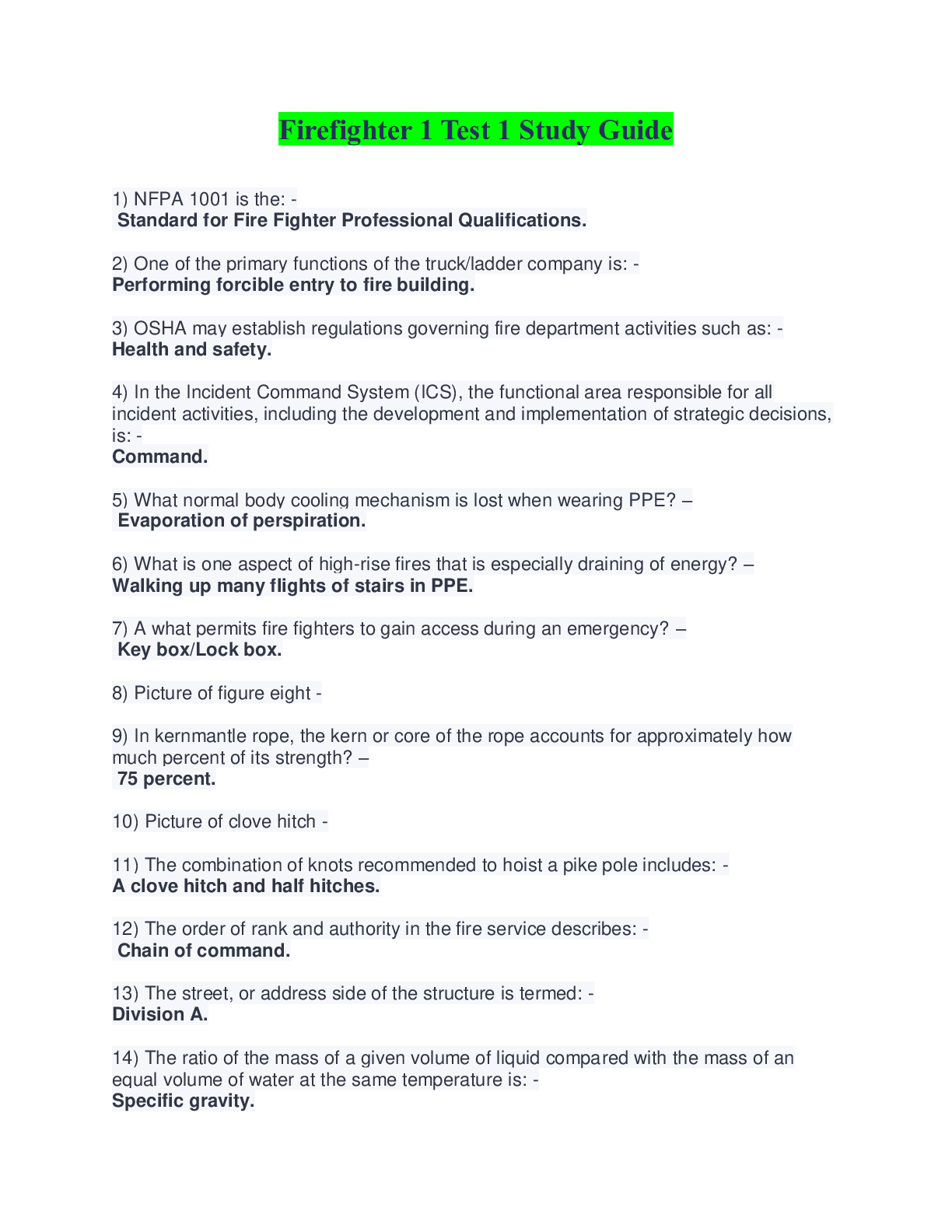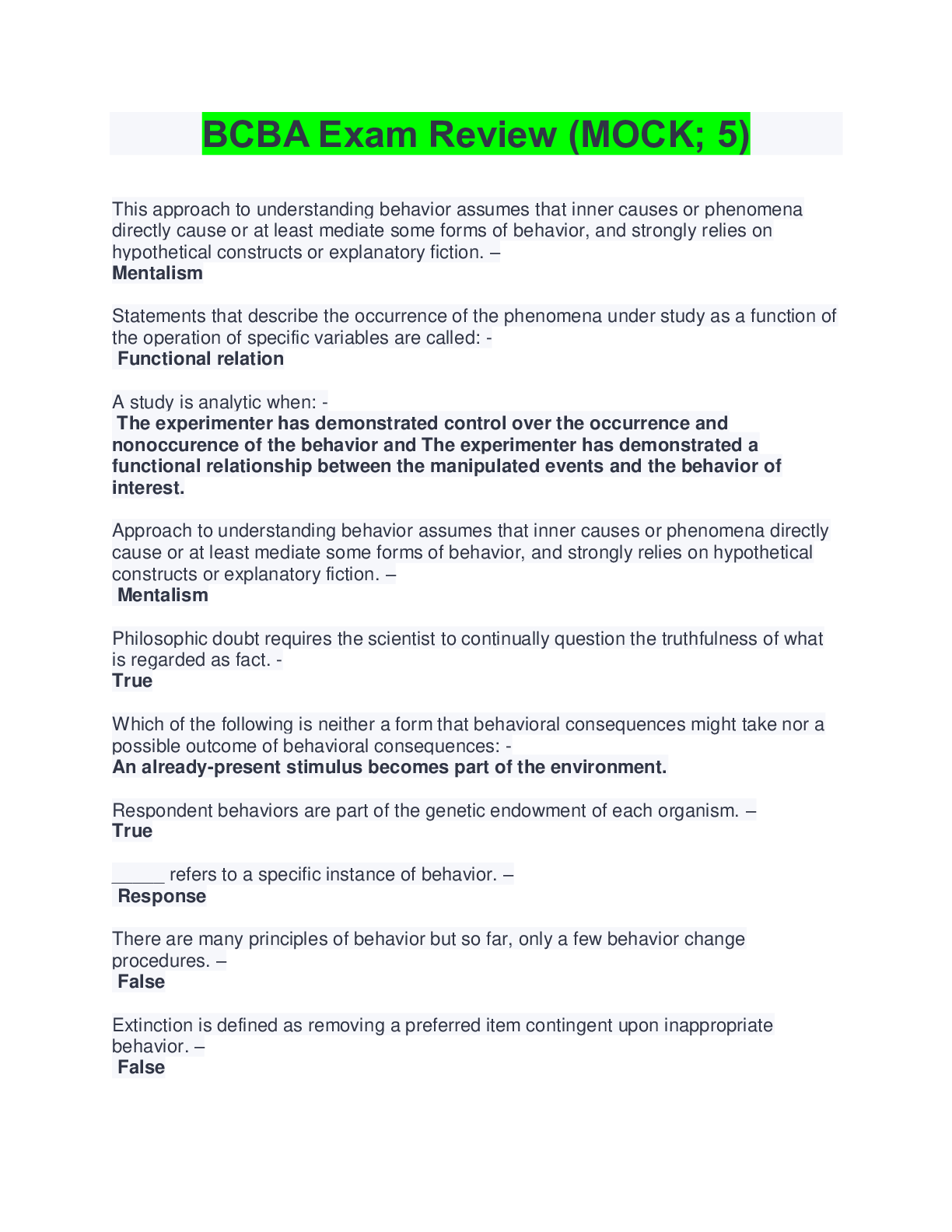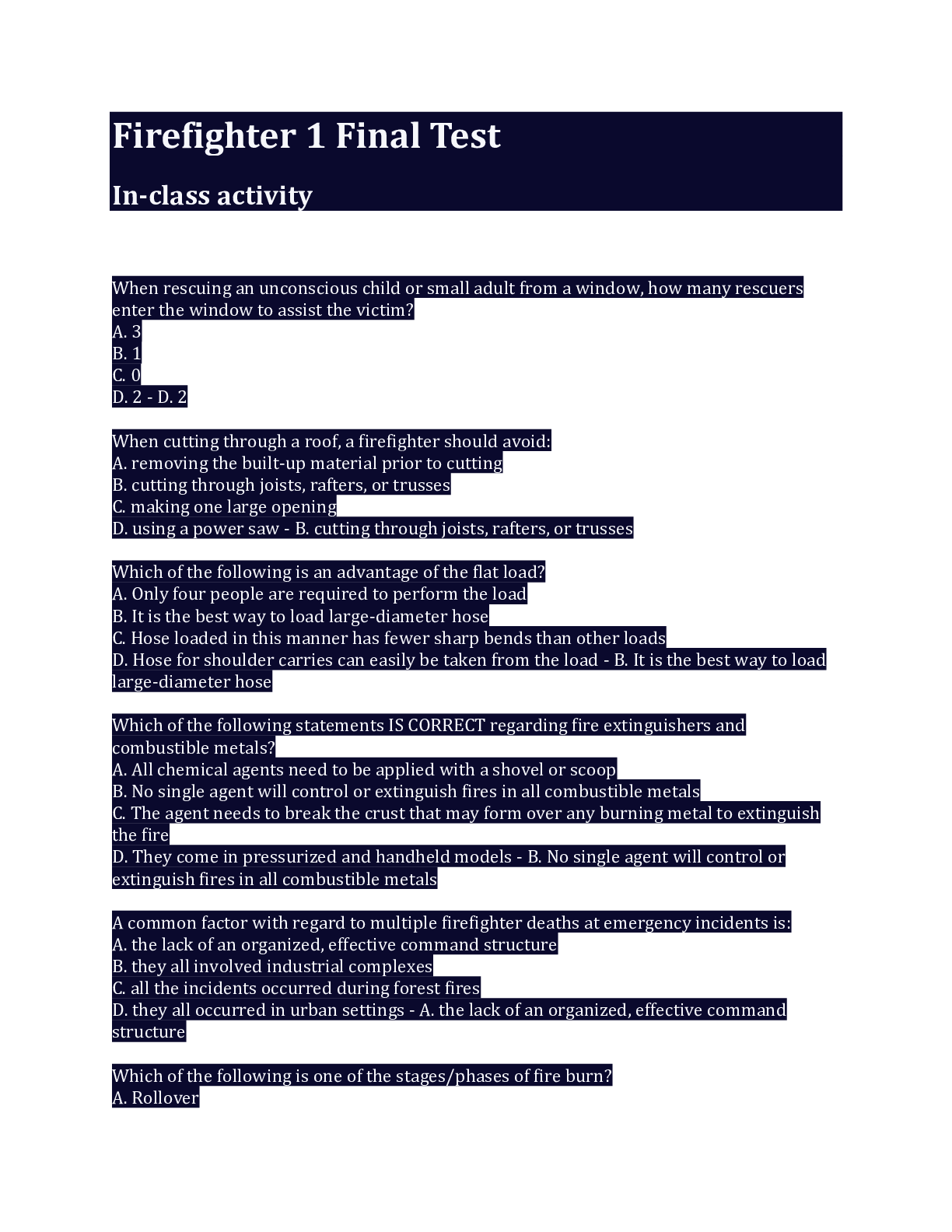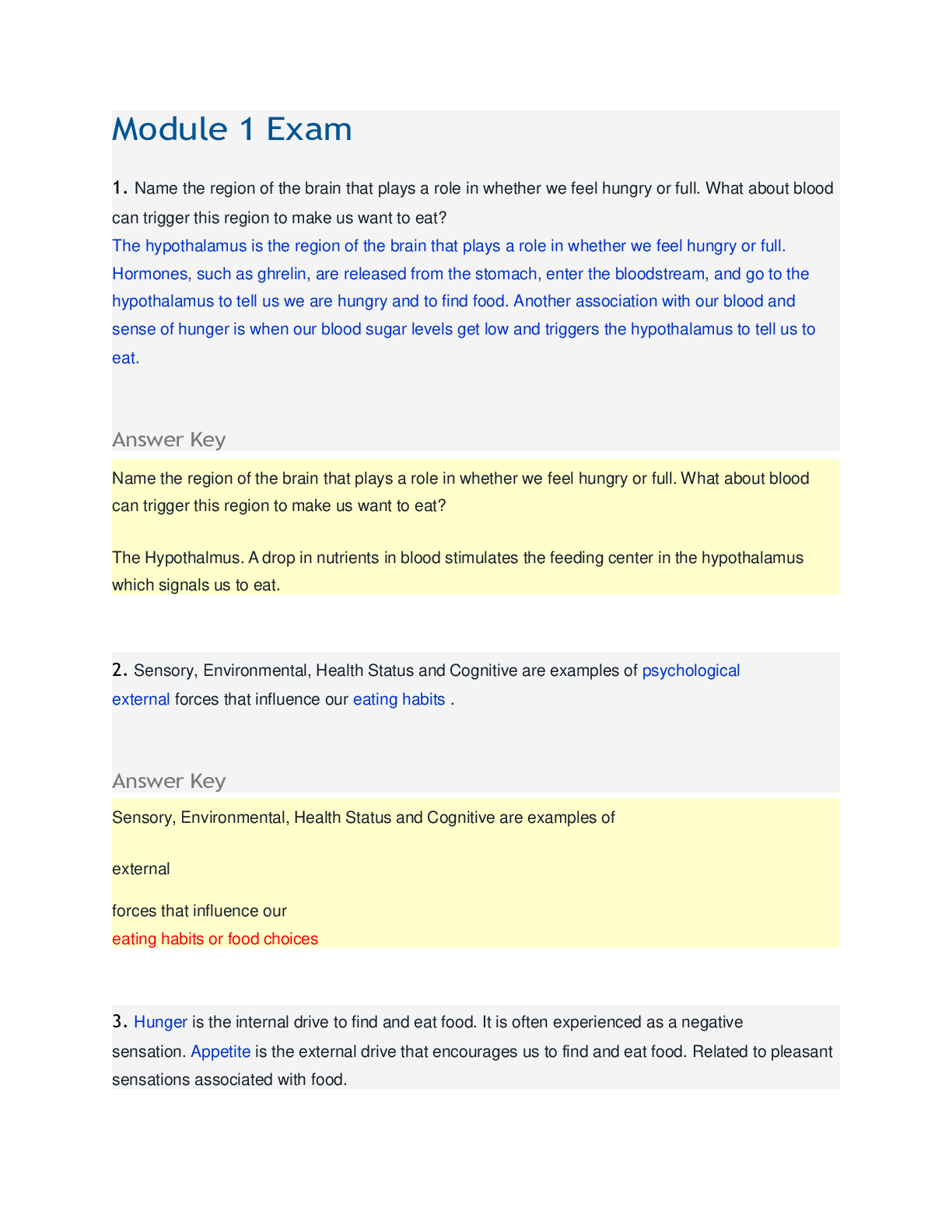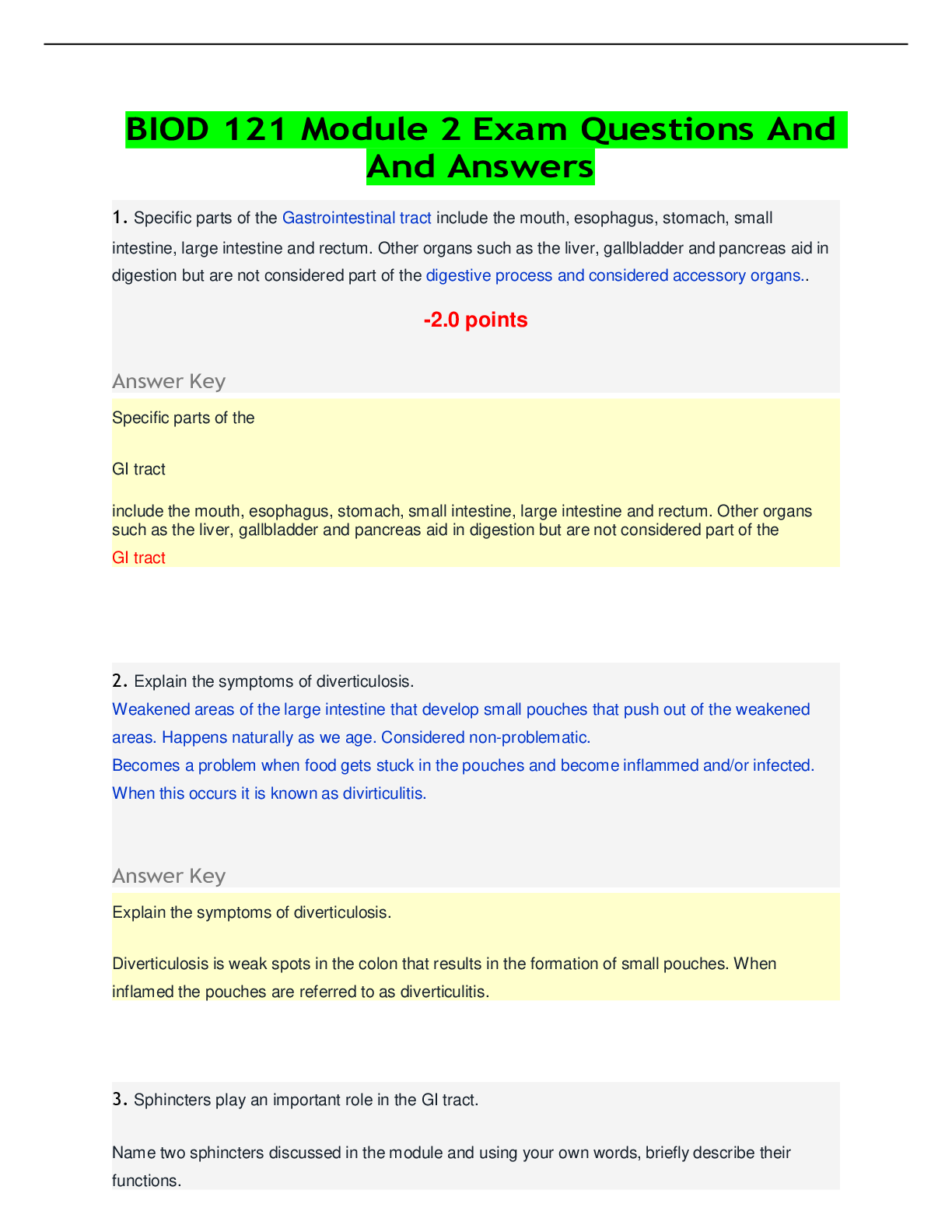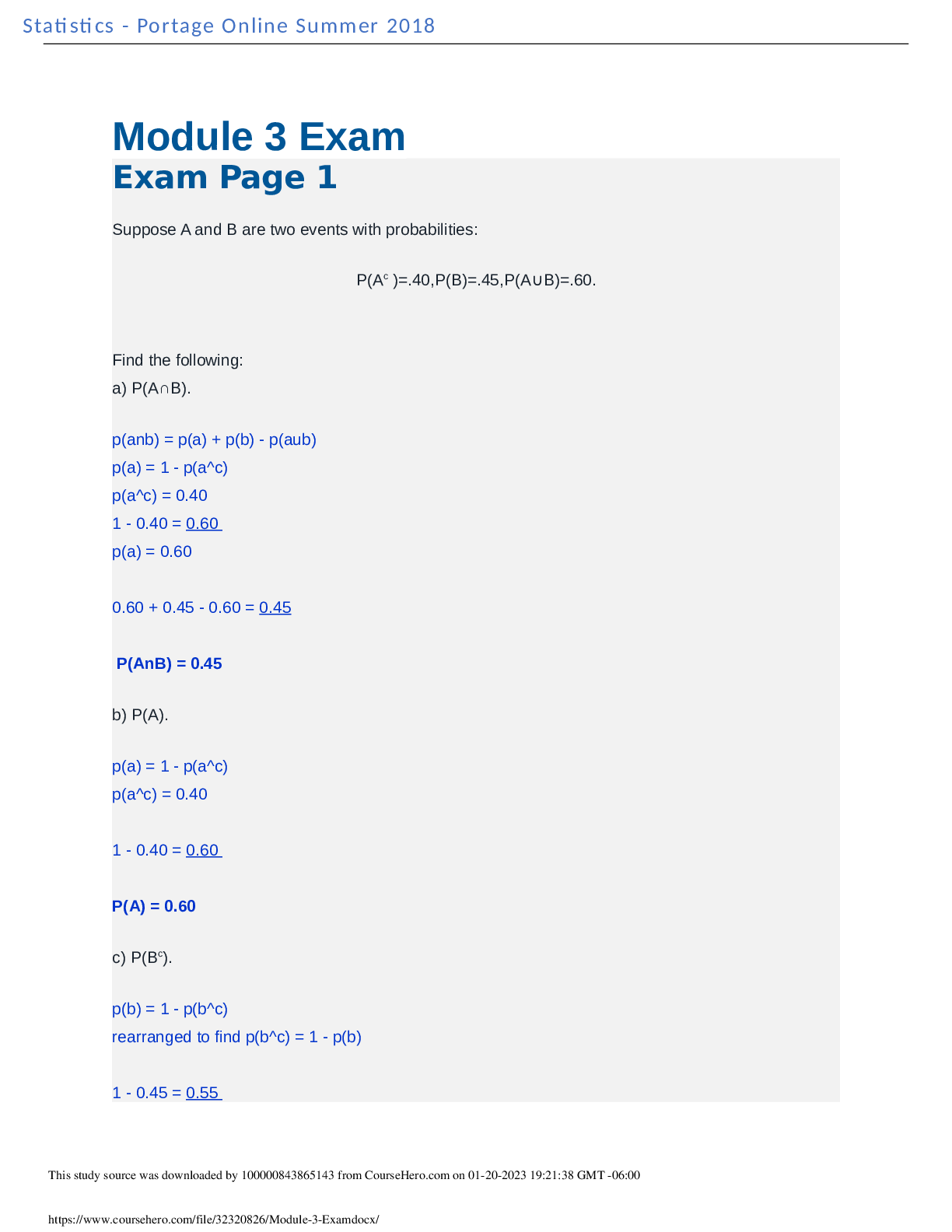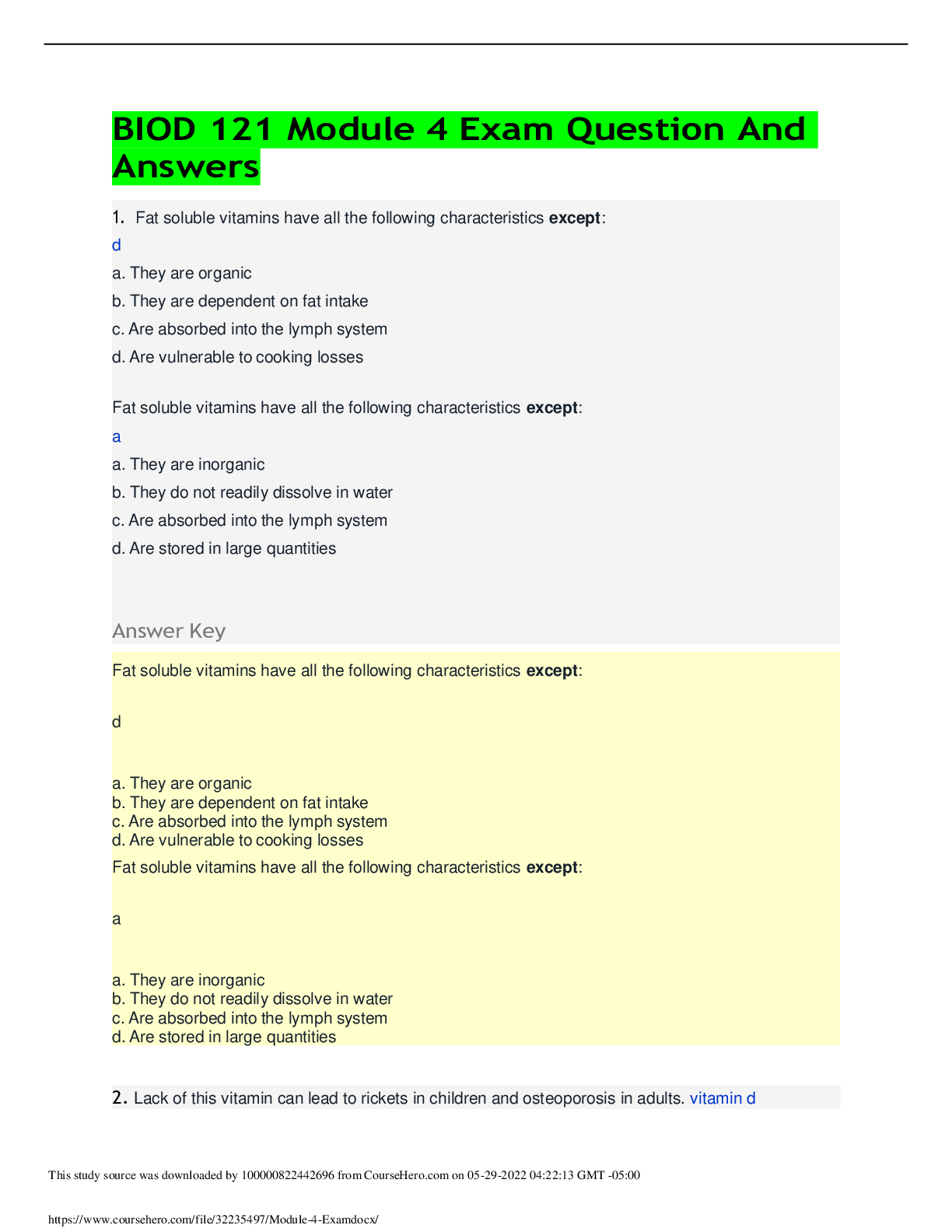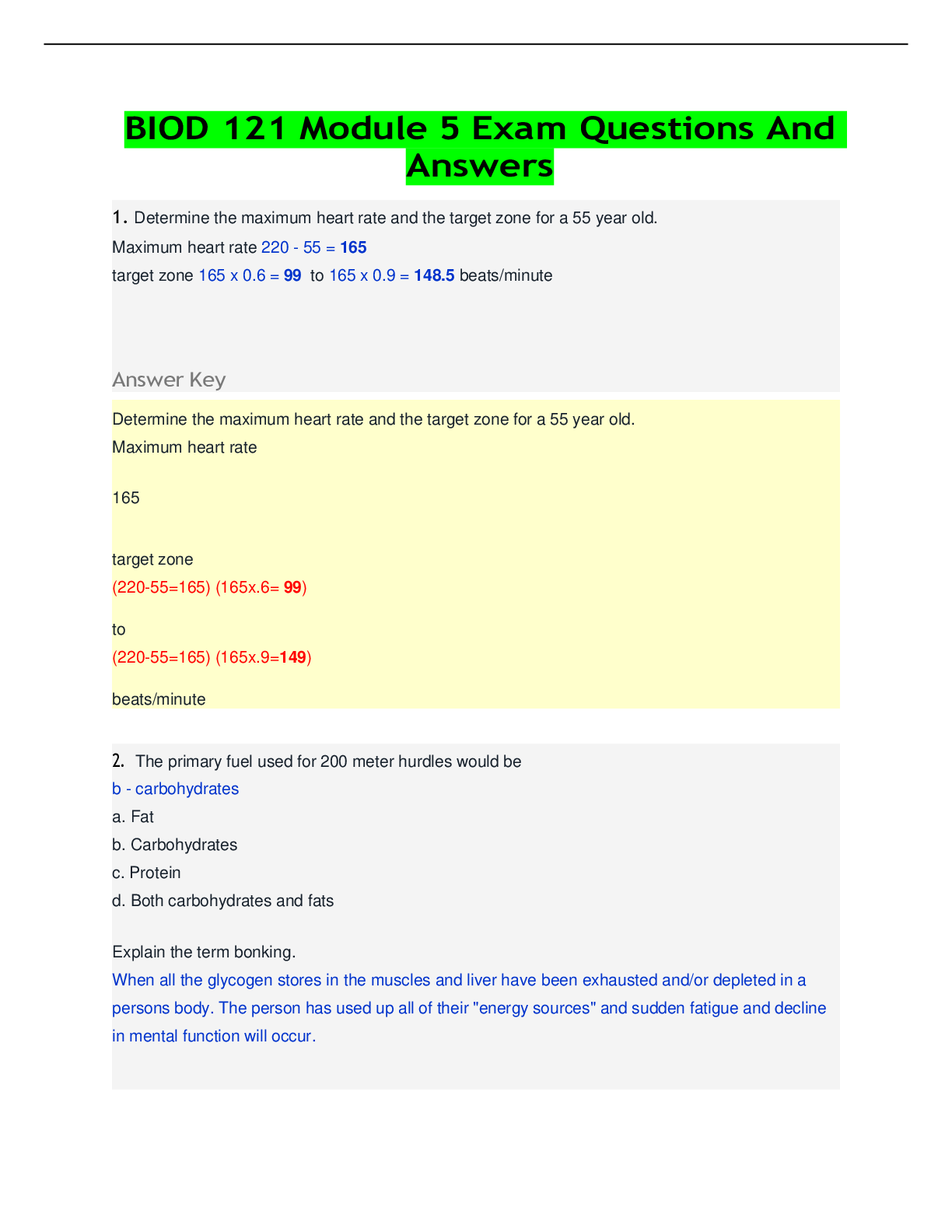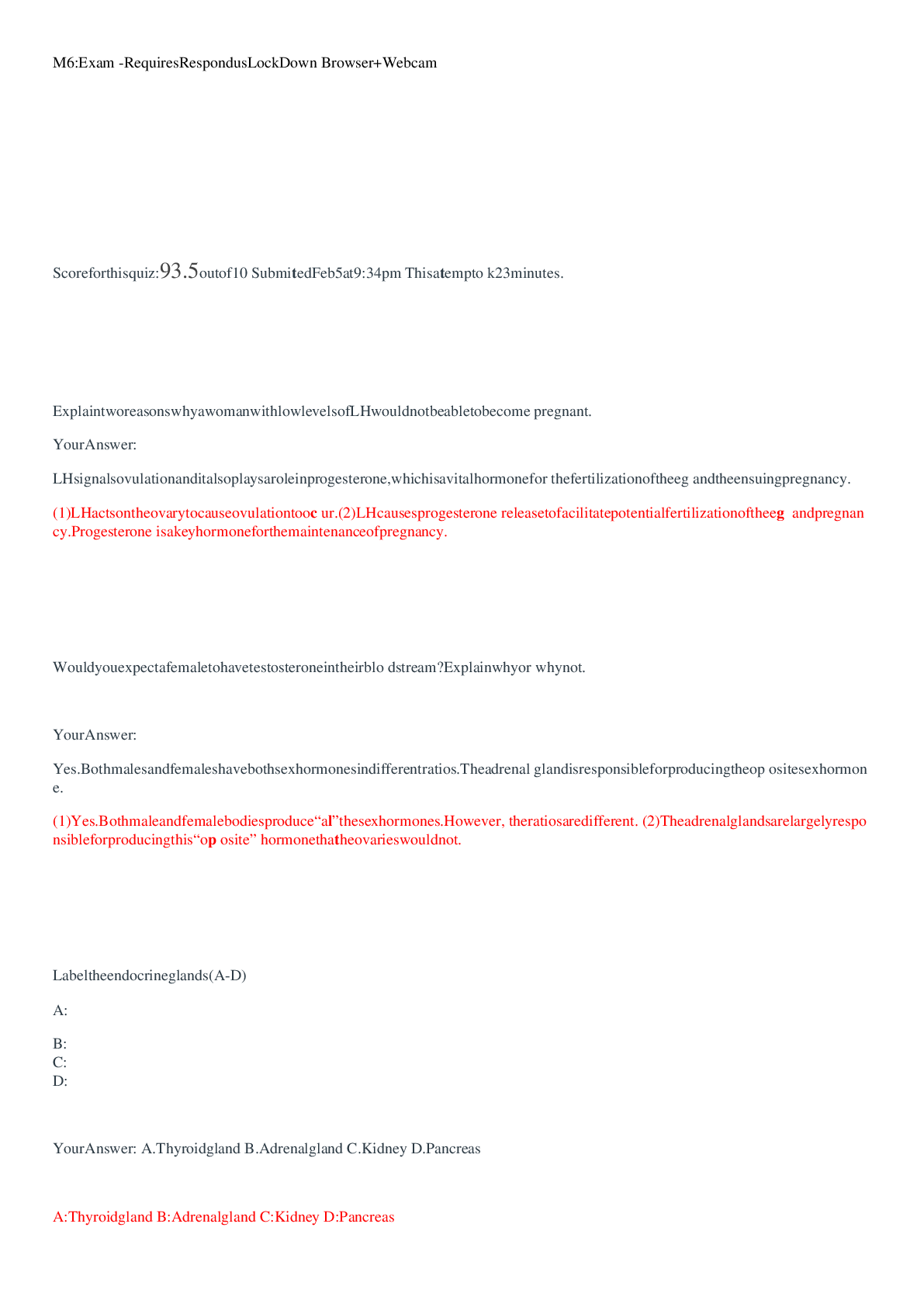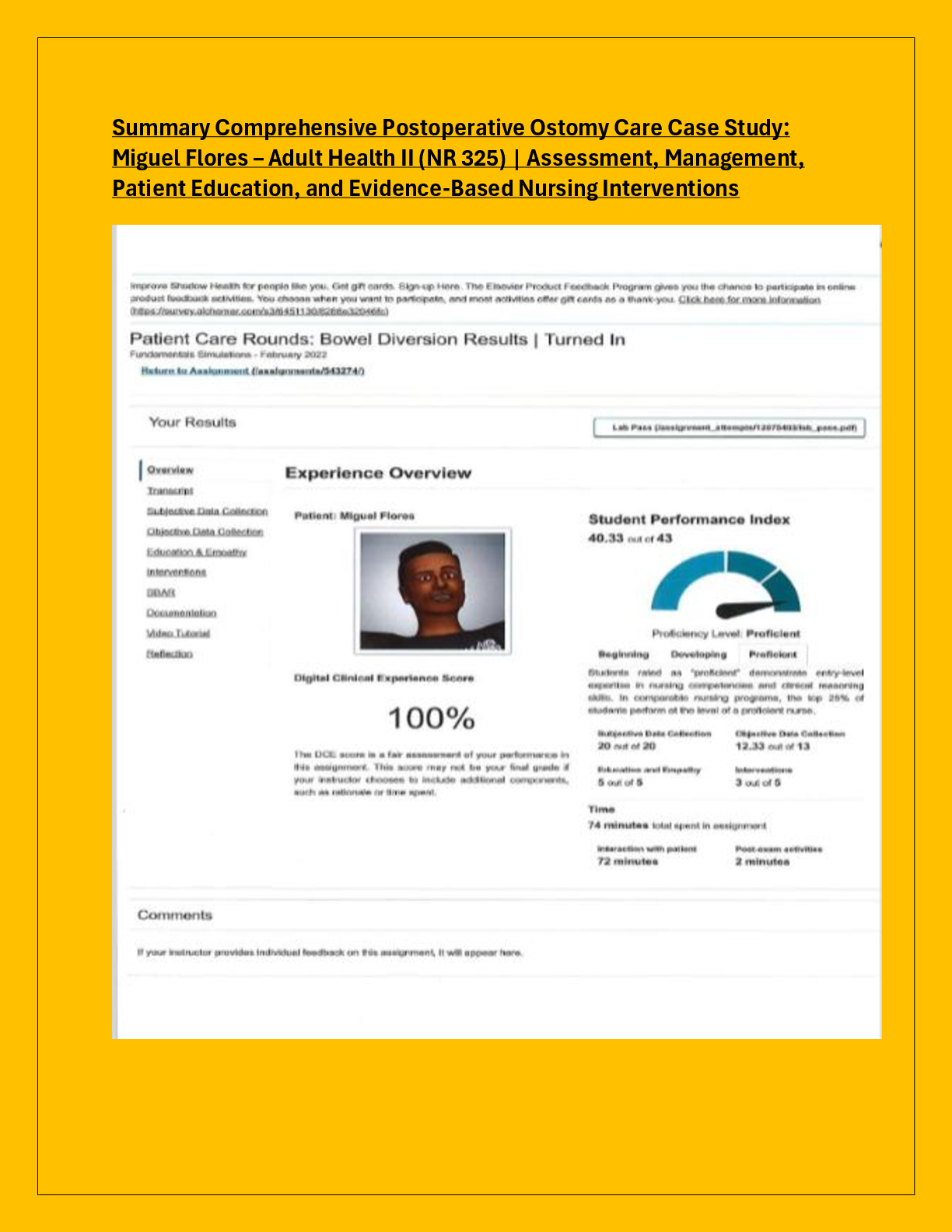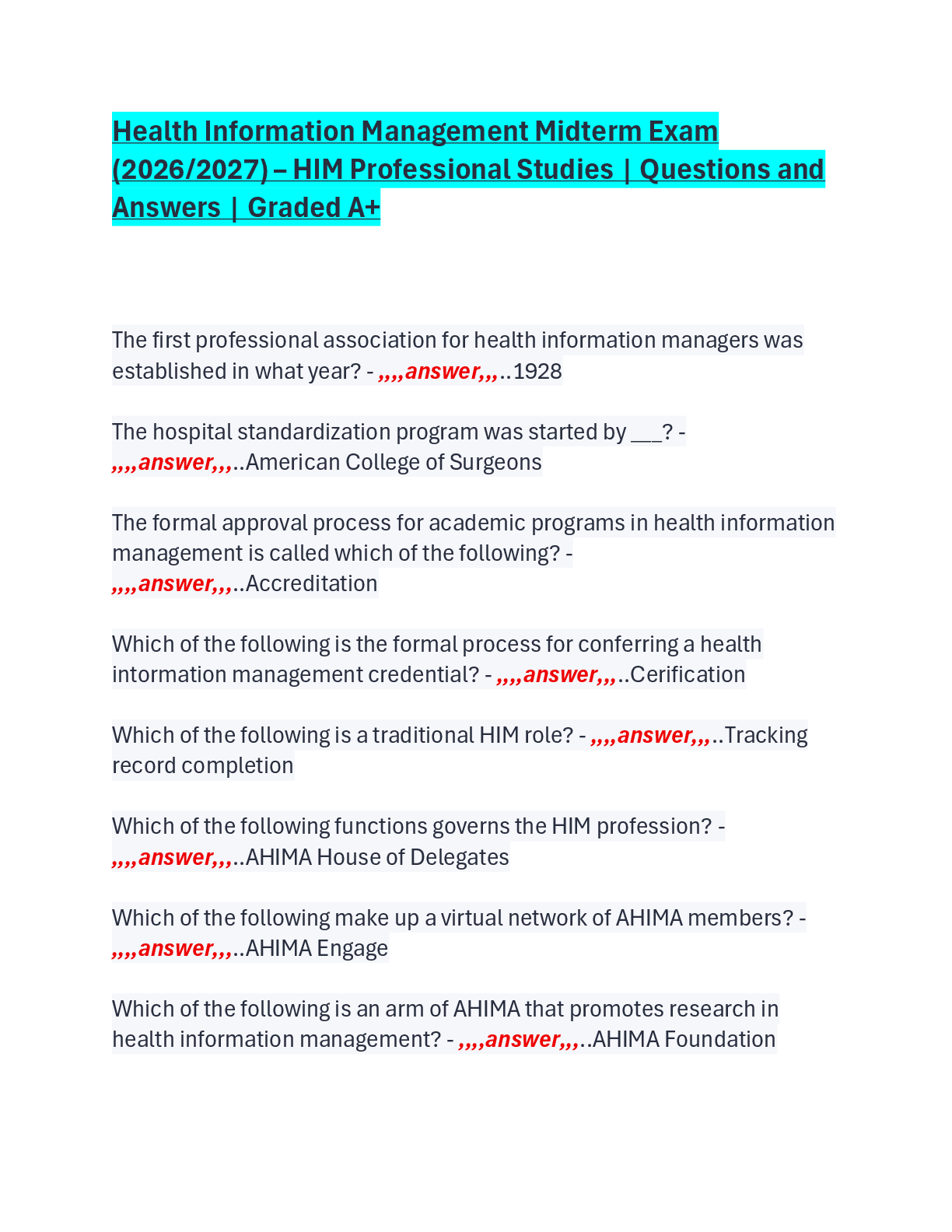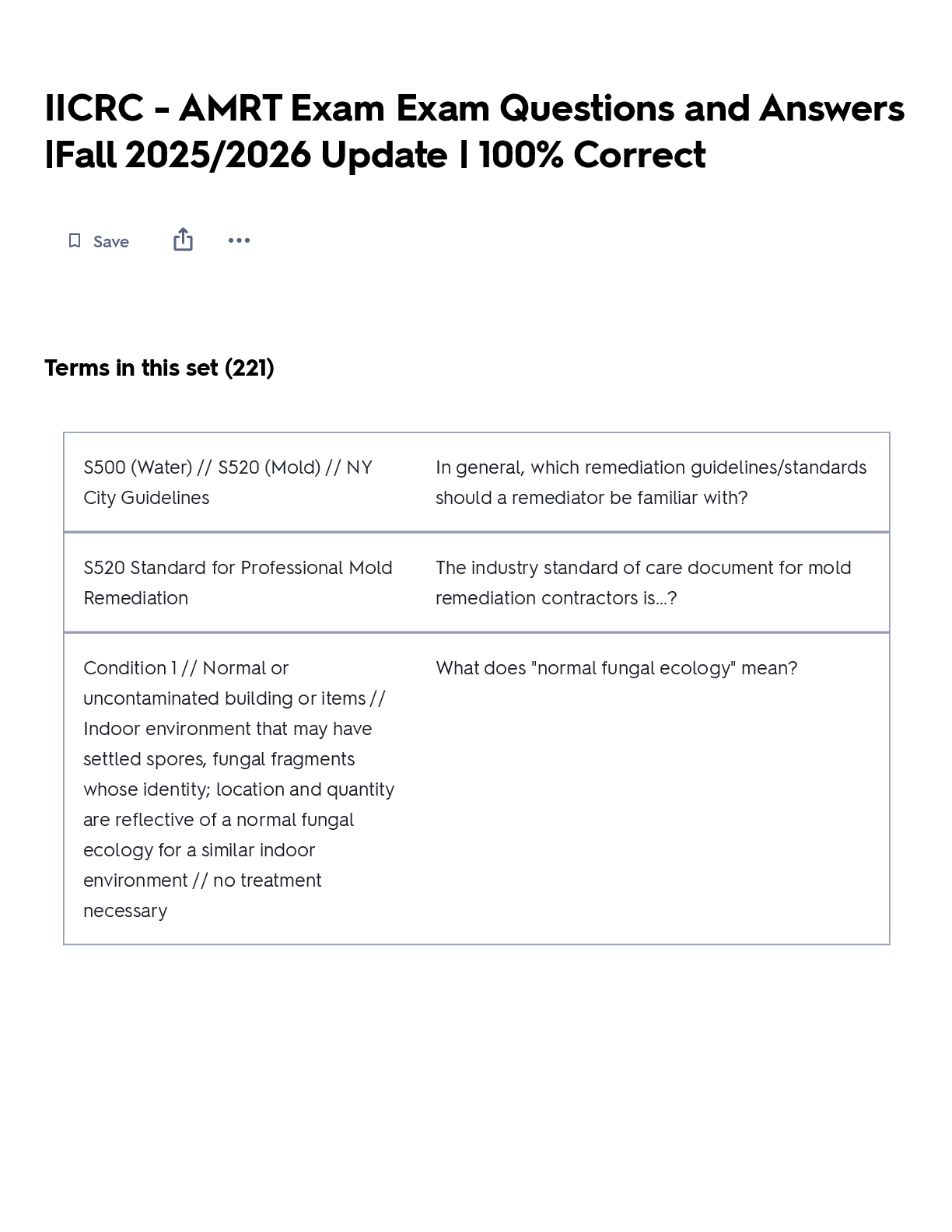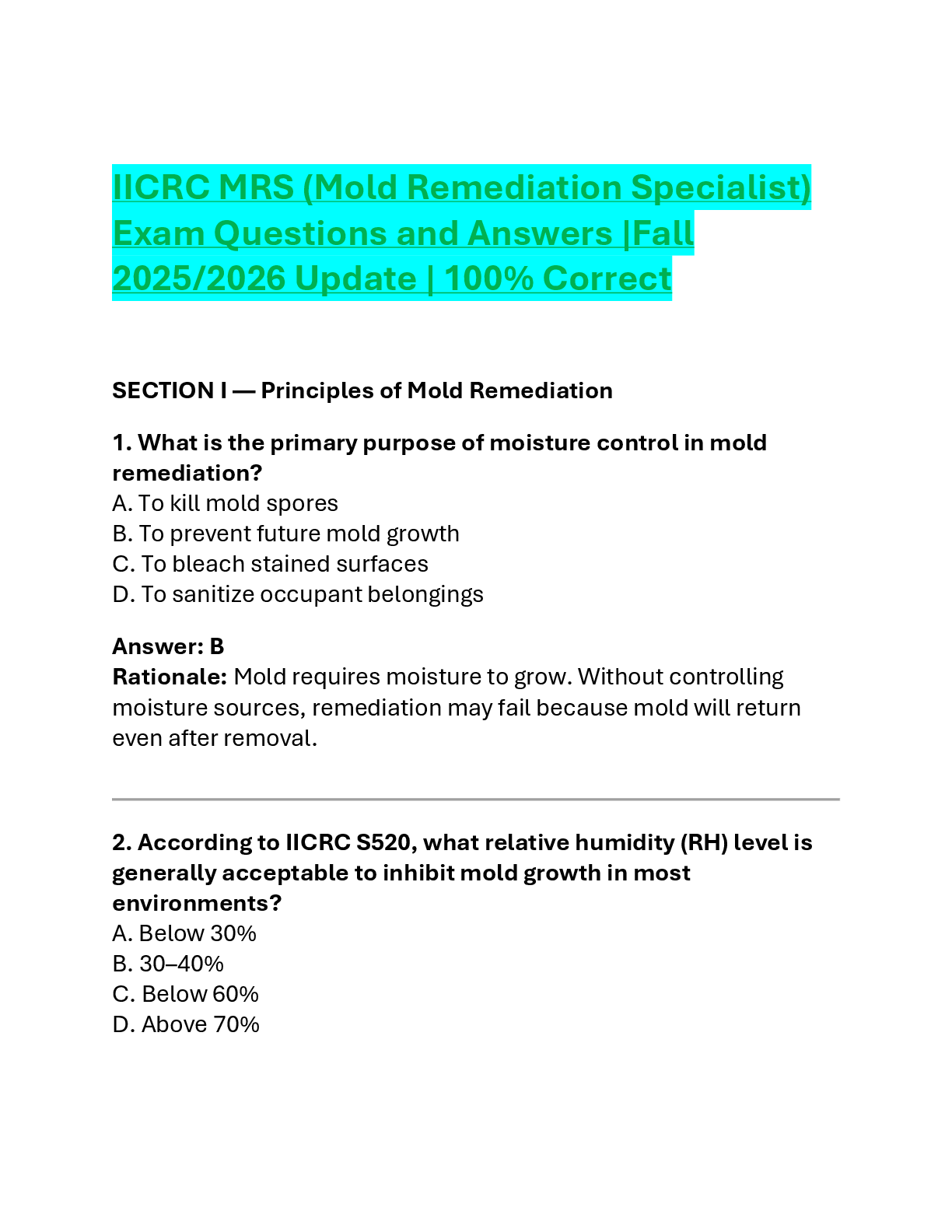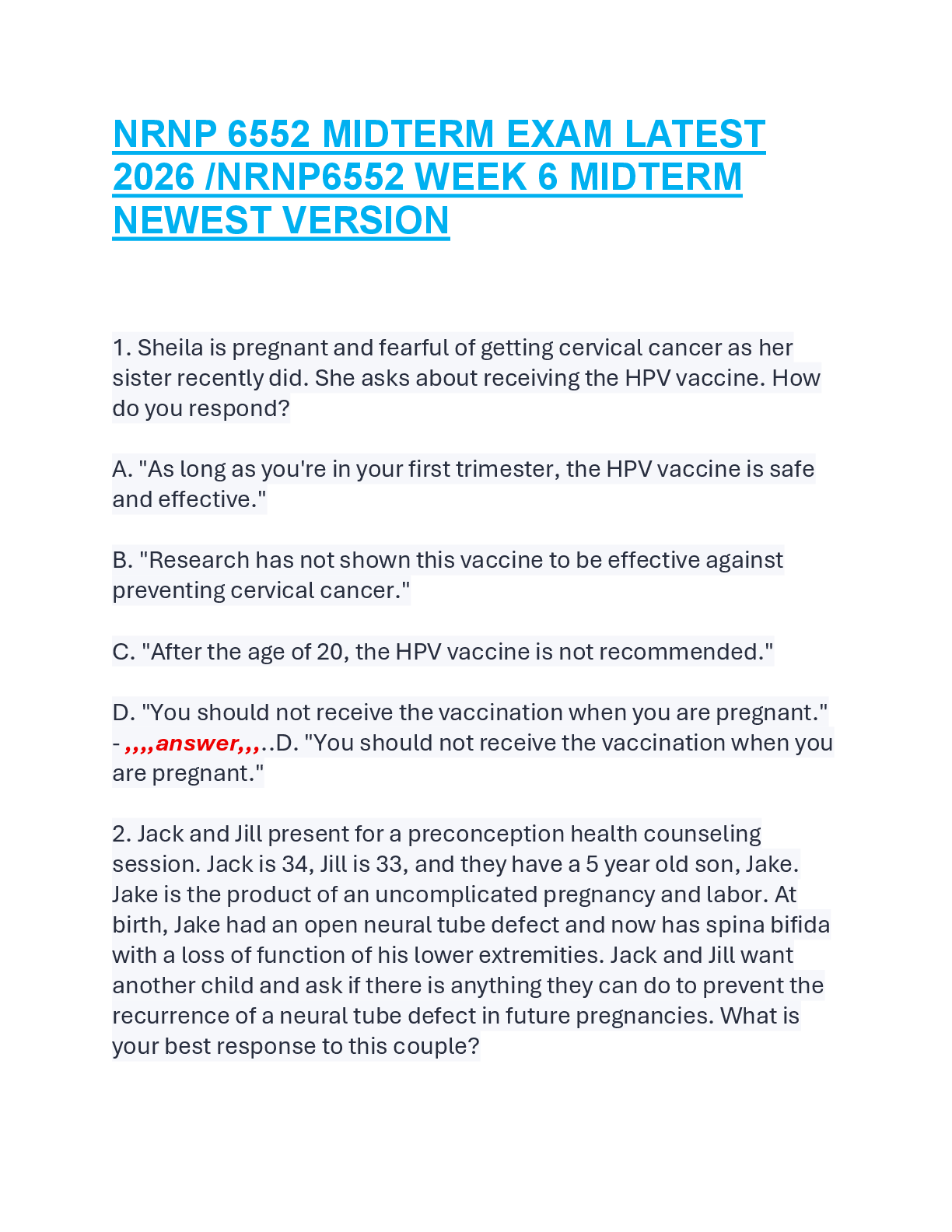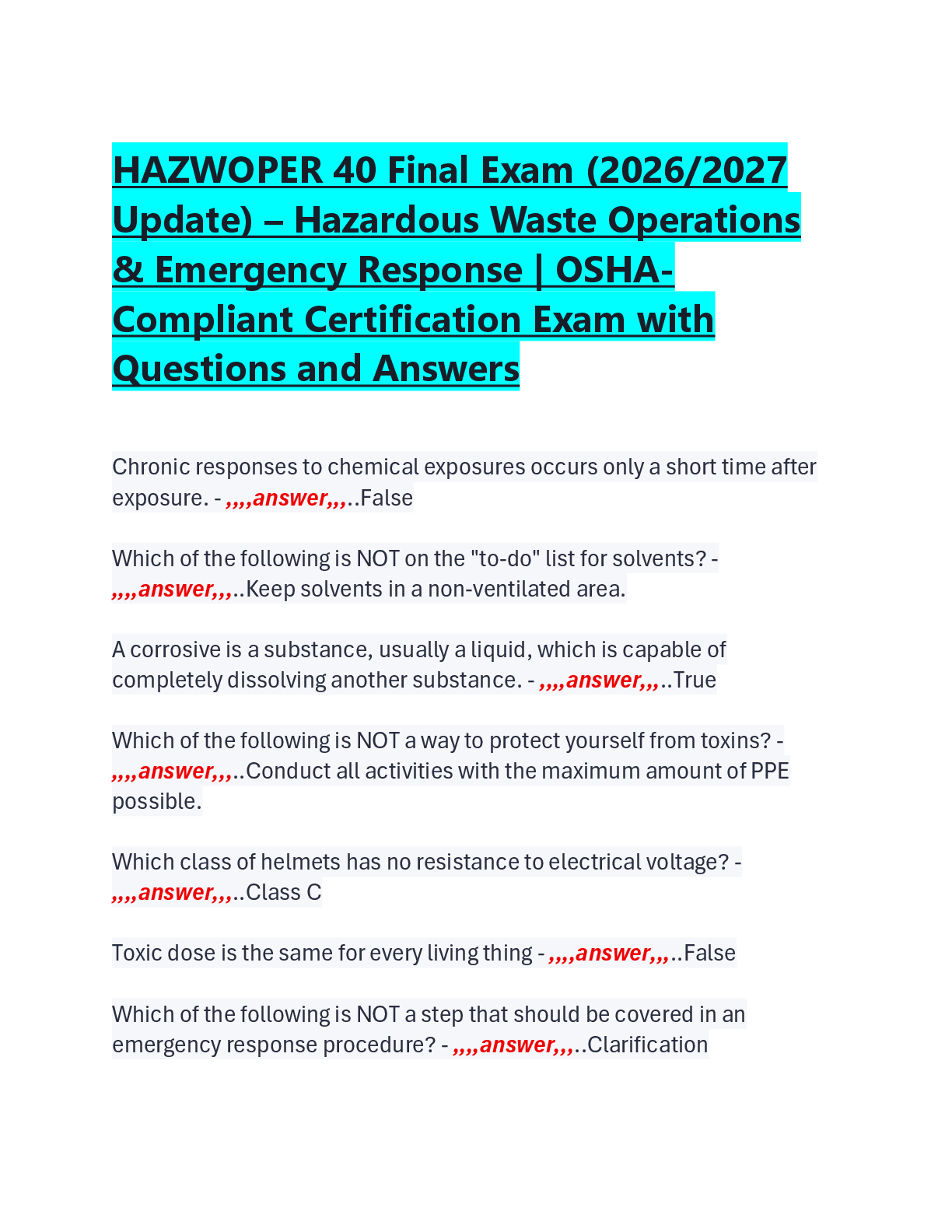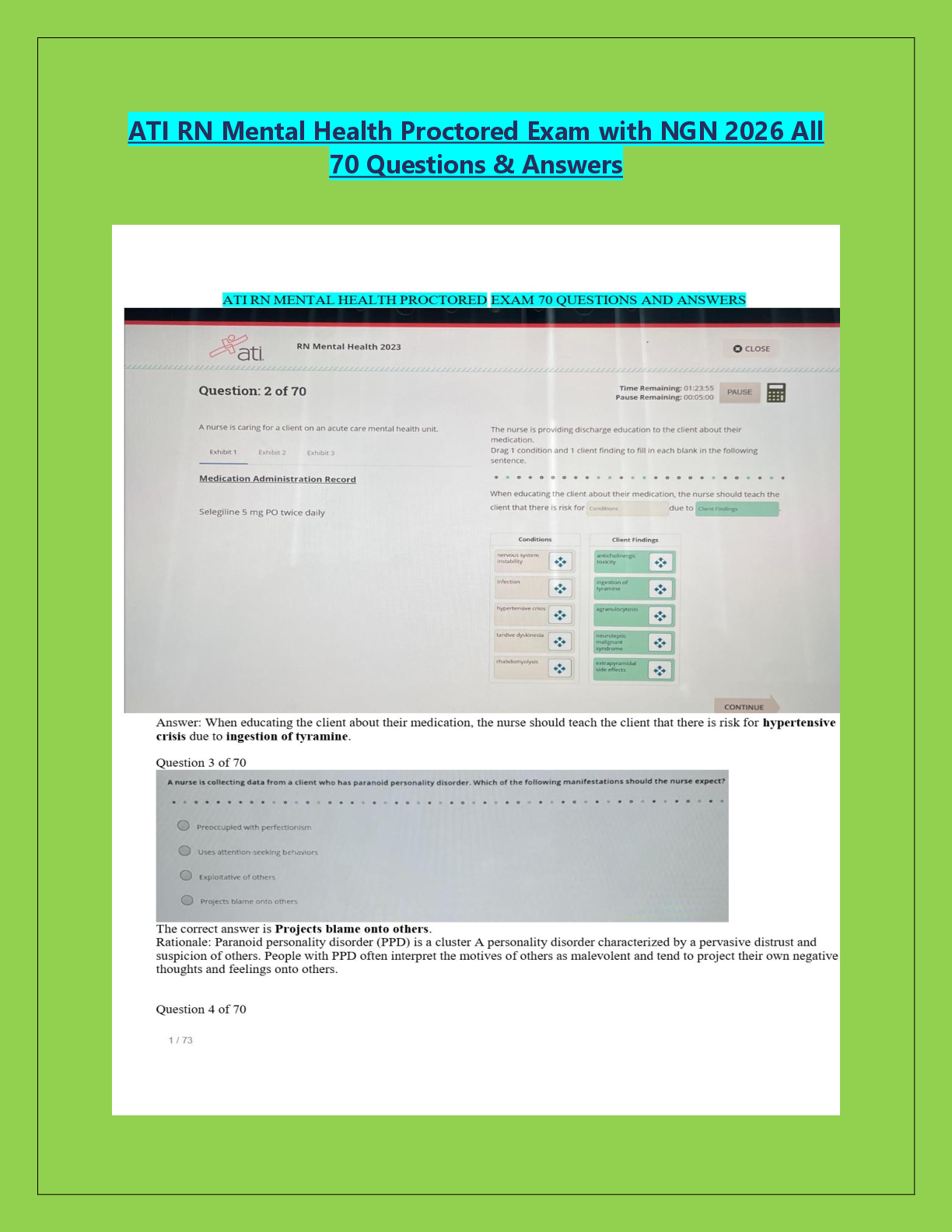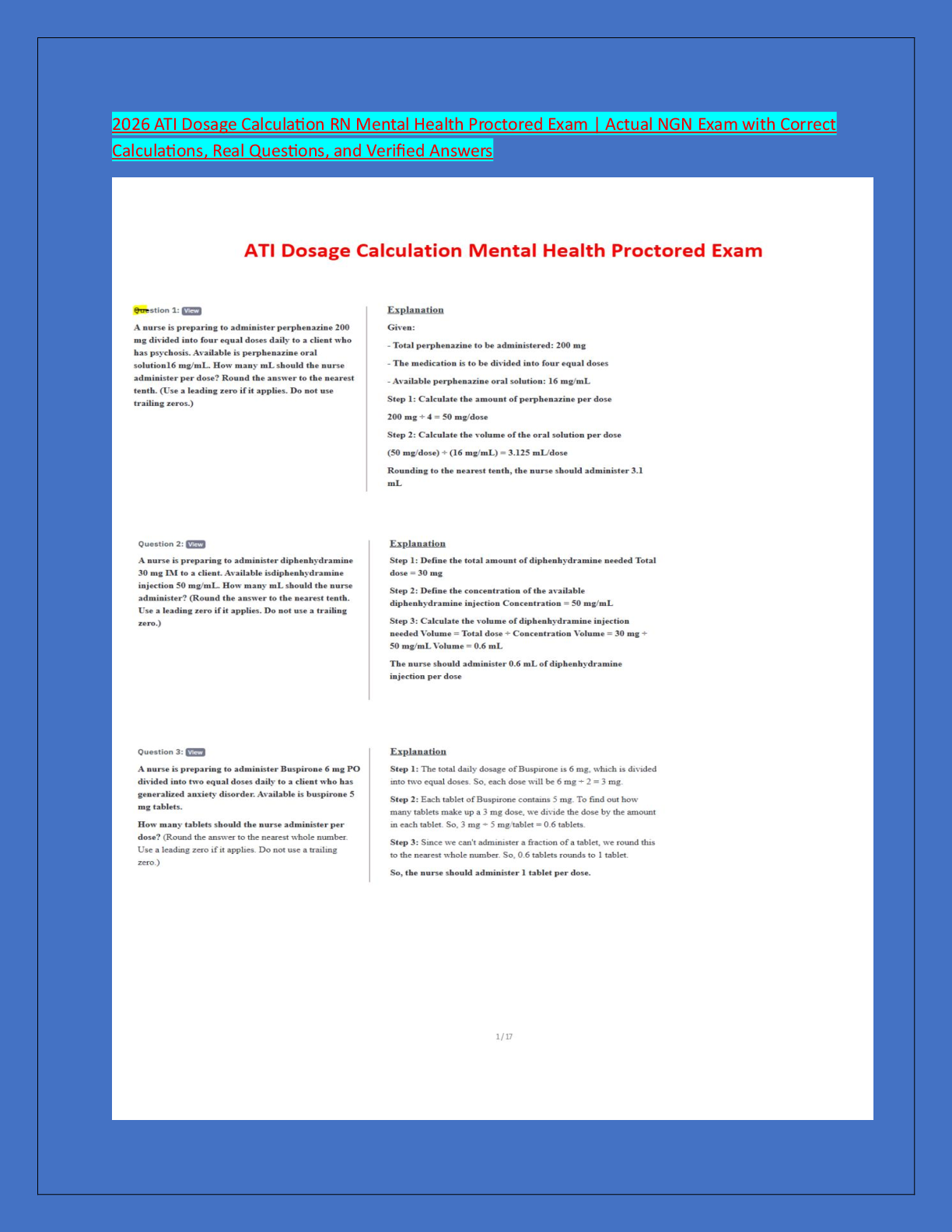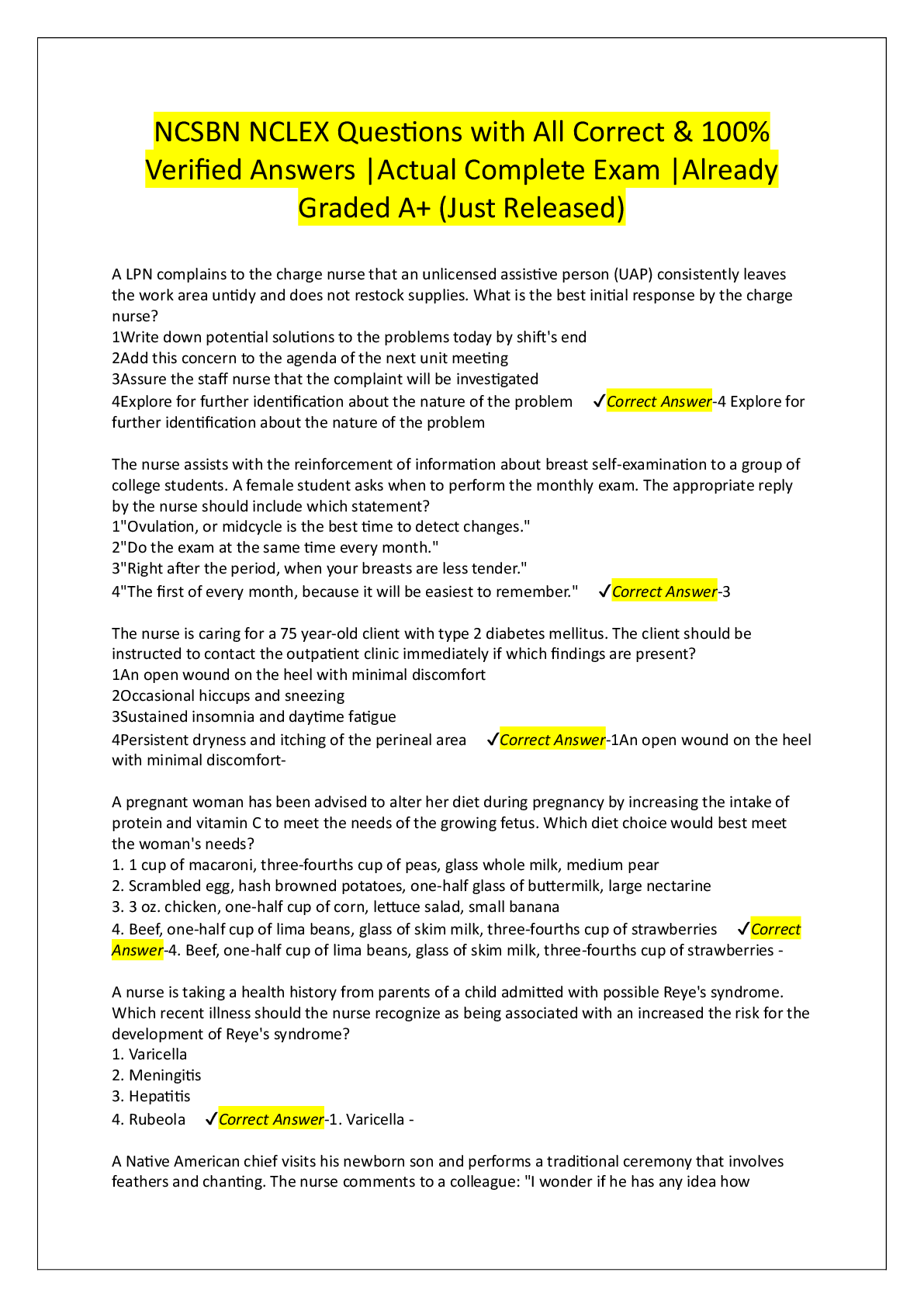Pathophysiology > EXAMs > NURSING NSG 5003 midterm exams- Questions and Annswers (All)
NURSING NSG 5003 midterm exams- Questions and Annswers
Document Content and Description Below
1. What effect does estrogen have on lymphocytes? (Points : 5) Question 2.2. Pressure in the left ventricle must exceed pressure in which structure before the left ventricle can eject blood? (Point ... s : 5) Question 3.3. How do cells receive communication from the extracellular fluid surrounding them? (Points : 5) Question 4.4. Which predominantly female valvular disorder is thought to have an autosomal dominant inheritance pattern and is thought to be associated with connective tissue disease? (Points : 5) Question 5.5. What are the abnormalities in cytokines found in children with cystic fibrosis? (Points : 5) Question 6.6. What is a consequence of leakage of lysosomal enzymes during chemical injury? (Points : 5) Question 7.7. Which factor contributes to the production of mucus associated with chronic bronchitis? (Points : 5) Question 8.8. In decompression sickness, emboli are formed by bubbles of: (Points : 5) Question 9.9. How does the aging process of the T-cell activity affect older adults? (Points : 5) Question 10.10. Reflex control of total cardiac output and total peripheral resistance is controlled by what mechanism? (Points : 5) Question 11.11. Which component of the plasma protein system tags pathogenic microorganisms for destruction by neutrophils and macrophages? (Points : 5) Question 12.12. Which statement is likely true regarding children being treated for cancer with radiation therapy? (Points : 5) Question 13.13. The right lymphatic duct drains into which structure? (Points : 5) Question 14.14. What are characteristics of benign tumors? (Points : 5) Question 15.15. In regulating vascular mediators released from mast cells, the role of eosinophils is to release: (Points : 5) Question 16.16. What occurs during exocytosis? (Points : 5) Solute molecules flow freely into and out of the cell. Question 17.17. What organic compounds facilitate transportation across cell membranes by acting as receptors, transport channels for electrolytes, and enzymes to drive active pumps? (Points : 5) Lipids Proteases Proteins Carbohydrates Question 18.18. What aberrant change causes the abnormal growth in retinoblastoma? (Points : 5) Proto-oncogenes are changed to oncogenes. The tumor-suppressor gene is turned off. Genetic amplification causes the growth. Chromosomes 9 and 21 are fused. Question 19.19. Which disease is an example of a rickettsial infection? (Points : 5) Cholera Candida Sleeping sickness Rocky Mountain spotted fever Question 20.20. Which statement is true about a eukaryotic cell? (Points : 5) It lacks a distinct nucleus. It contains compartments called organelles. It lacks an encasing nuclear membrane. It is smaller than the typical prokaryote cell. Question 21.21. What causes the rapid change in the resting membrane potential to initiate an action potential? (Points : 5) Potassium gates open and potassium rushes into the cell, changing the membrane potential from negative to positive. Sodium gates open and sodium rushes into the cell, changing the membrane potential from negative to positive. Sodium gates close, allowing potassium into the cell to change the membrane potential from positive to negative. Potassium gates close, allowing sodium into the cell to change the membrane potential from positive to negative. Question 22.22. Which hormone increases the formation of glucose from amino acids and free fatty acids? (Points : 5) Epinephrine Norepinephrine Cortisol Growth hormone Question 23.23. Which type of cell adaptation occurs when normal columnar ciliated epithelial cells of the bronchial lining have been replaced by stratified squamous epithelial cells? (Points : 5) Hyperplasia Metaplasia Dysplasia Anaplasia Question 24.24. What is a consequence of plasma membrane damage to the mitochondria? (Points : 5) Enzymatic digestion halts deoxyribonucleic acid (DNA) synthesis. Influx of calcium ions halts adenosine triphosphate (ATP) production. Edema from an influx in sodium causes a reduction in ATP production. Potassium shifts out of the mitochondria, which destroys the infrastructure. Question 25.25. What is the initial manifestation of aortic coarctation observed in a neonate? (Points : 5) Congestive heart failure (CHF) Cor pulmonale Pulmonary hypertension Cerebral hypertension Question 26.26. Which cytokines activated in childhood asthma produce an allergic response? (Points : 5) IL-1, IL-2, and interferon-alpha (IFN-α) IL-8, IL-12, and tumor necrosis factor–alpha (TNF-α) IL-4, IL-10, and colony-stimulating factor (CSF) IL-4, IL-5, and IL-13 Question 27.27. Free radicals play a major role in the initiation and progression of which diseases? (Points : 5) Cardiovascular diseases, such as hypertension and ischemic heart disease Renal diseases, such as acute tubular necrosis and glomerulonephritis Gastrointestinal diseases, such as peptic ulcer disease and Crohn disease Muscular diseases, such as muscular dystrophy and fibromyalgia Question 28.28. What is the expected electrocardiogram (ECG) pattern when a thrombus in a coronary artery permanently lodges in the vessel and the infarction extends through the myocardium from the endocardium to the epicardium? (Points : 5) Prolonged QT interval ST elevation myocardial infarction (STEMI) ST depression myocardial infarction (STDMI) Non-ST elevation myocardial infarction (non-STEMI) Question 29.29. Which is an example of an endogenous antigen? (Points : 5) Yeast Cancer cells Bacteria Fungus Question 30.30. What mechanisms occur in the liver cells as a result of lipid accumulation? (Points : 5) Obstruction of the common bile duct, preventing the flow of bile from the liver to the gallbladder Increased synthesis of triglycerides from fatty acids and decreased synthesis of apoproteins Increased binding of lipids with apoproteins to form lipoproteins Increased conversion of fatty acids to phospholipids Question 31.31. The fluid mosaic model explains: (Points : 5) How a cell membrane functions Why our bodies appear to be solid How tissue is differentiated How fluid moves between the intracellular and extracellular compartments Question 32.32. The most common site of metastasis for a patient diagnosed with prostate cancer is: (Points : 5) Bones Brain Bladder Kidney Question 33.33. Which function of the cardiovascular system is often affected by ischemia? (Points : 5) Cardiac output Stroke volume Heart rate Cardiac index Question 34.34. The role of cytokines in cell reproduction is that they: (Points : 5) Provide growth factor for tissue growth and development. Block the progress of cell reproduction through the cell cycle. Restrain cell growth and development. Provide nutrients for cell growth and development. Question 35.35. Which method of transport uses transmembrane proteins with receptors with a high degree of specificity for the substance being transported? (Points : 5) Active Mediated Transmembranous Passive Question 36.36. Chvostek and Trousseau signs indicate which electrolyte imbalance? (Points : 5) Hypokalemia Hyperkalemia Hypocalcemia Hypercalcemia Question 37.37. When an individual aspirates food particles, where would the nurse expect to hear decreased or absent breath sounds? (Points : 5) Left lung Right lung Trachea Carina Question 38.38. What is the skin-related health risk induced by some types of chemotherapy? (Points : 5) Infection Ultraviolet damage Pain Erythema Question 39.39. Hemoprotein accumulations are a result of the excessive storage of: (Points : 5) Iron, which is transferred from the cells to the bloodstream Hemoglobin, which is transferred from the bloodstream to the cells Albumin, which is transferred from the cells to the bloodstream Amino acids, which are transferred from the cells to the bloodstream Question 40.40. How should the nurse reply when parents question why a computed tomographic (CT) scan of the head was not ordered for their five-year-old child after a minor fall? (Points : 5) Physicians are cautious about ordering CT scans on children younger than ten years of age. CT scans are seldom conclusive when used to diagnose head injuries in young children. The child’s symptoms will determine whether a CT scan is necessary and worth the expense. Research suggests that repeated CT scans can increase the risk of developing brain cancer. [Show More]
Last updated: 3 years ago
Preview 1 out of 8 pages
 (1).png)
Buy this document to get the full access instantly
Instant Download Access after purchase
Buy NowInstant download
We Accept:

Reviews( 0 )
$15.50
Can't find what you want? Try our AI powered Search
Document information
Connected school, study & course
About the document
Uploaded On
Aug 07, 2021
Number of pages
8
Written in
All
Additional information
This document has been written for:
Uploaded
Aug 07, 2021
Downloads
0
Views
74


